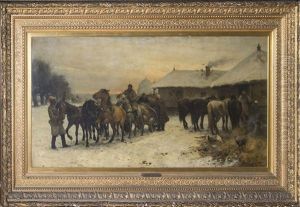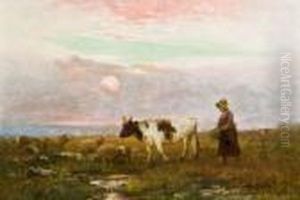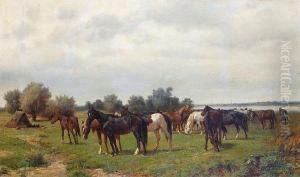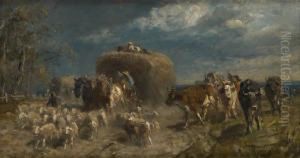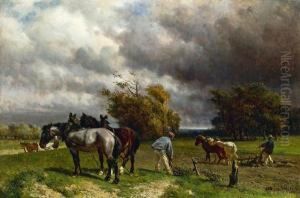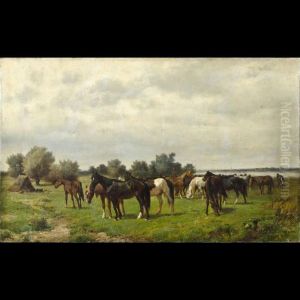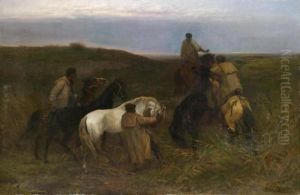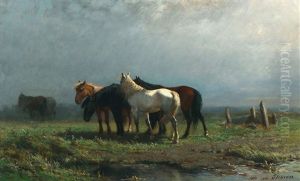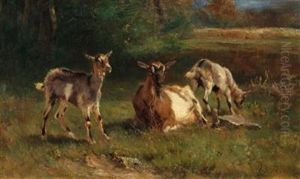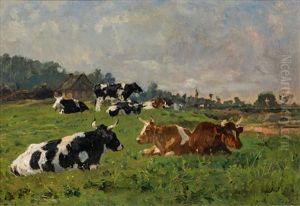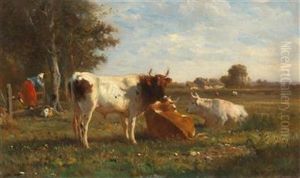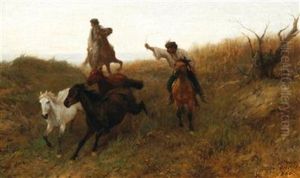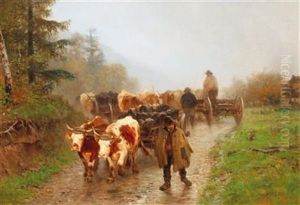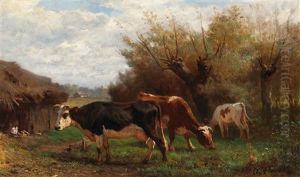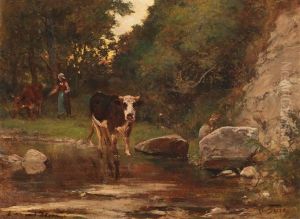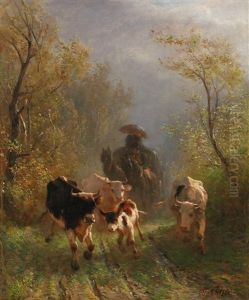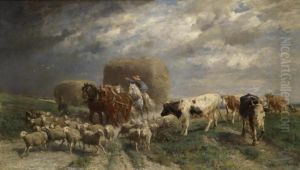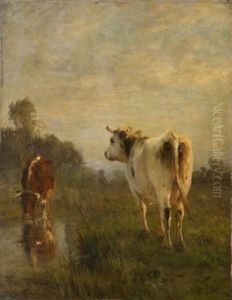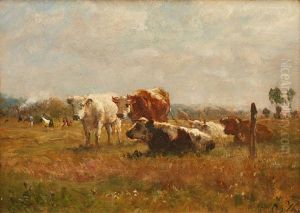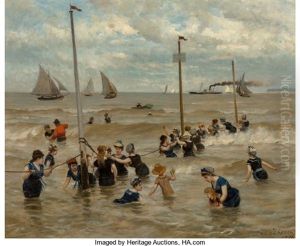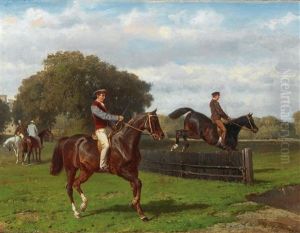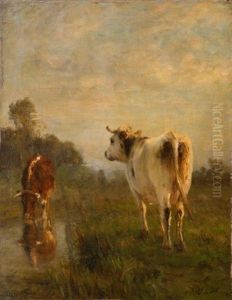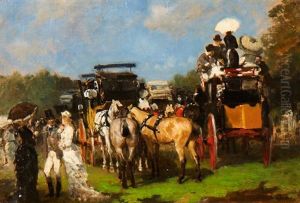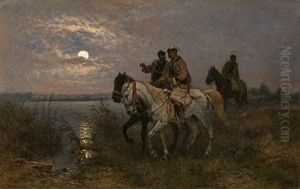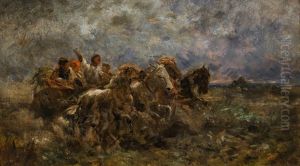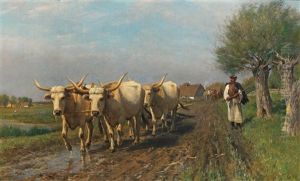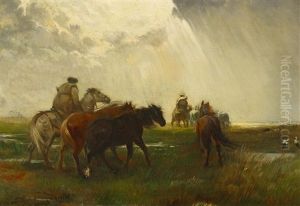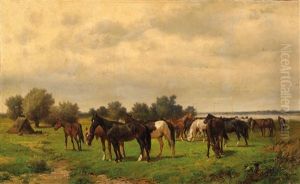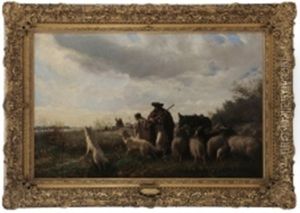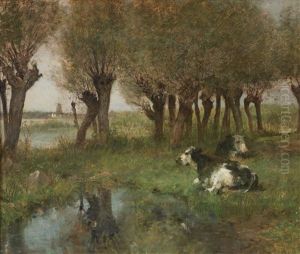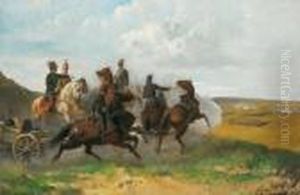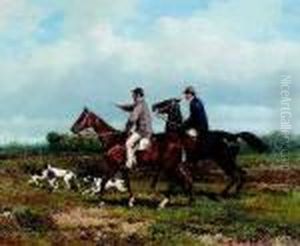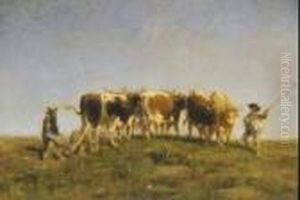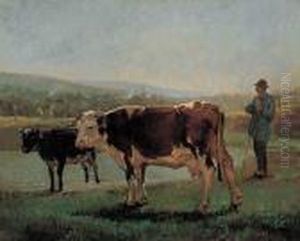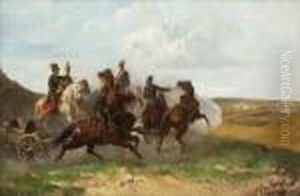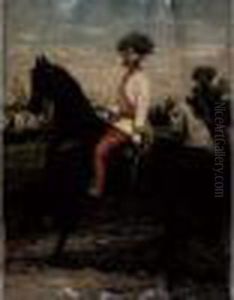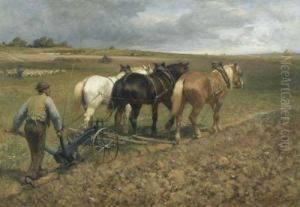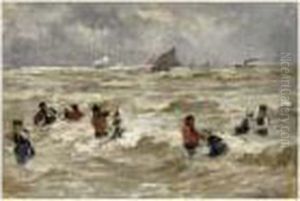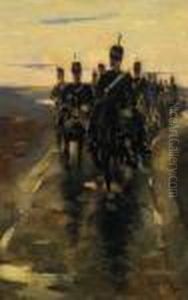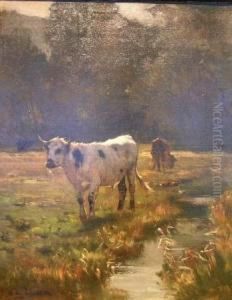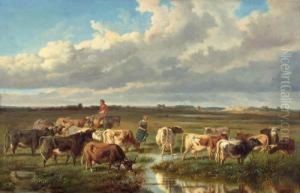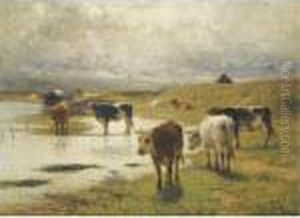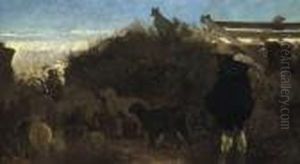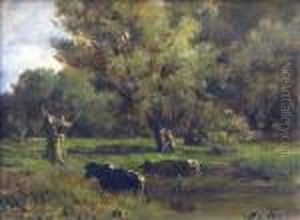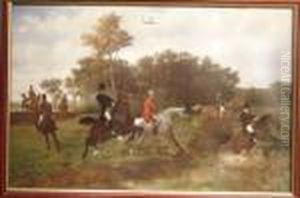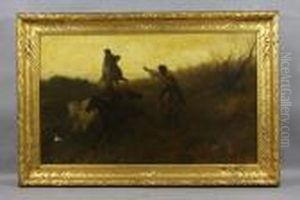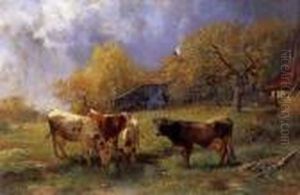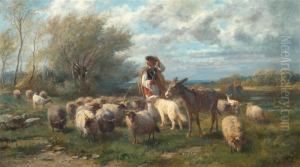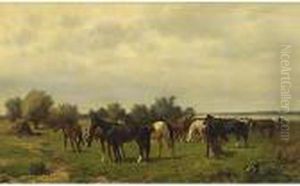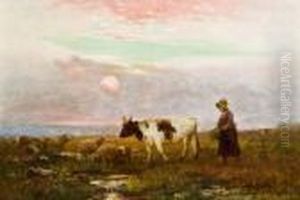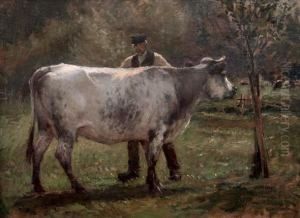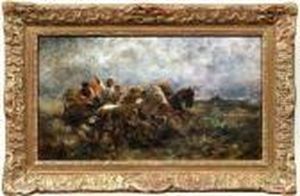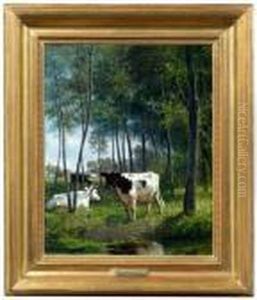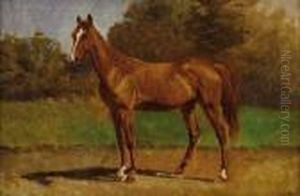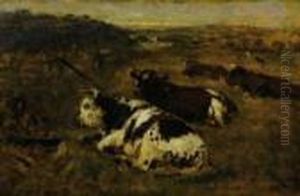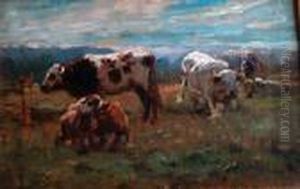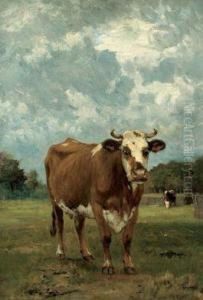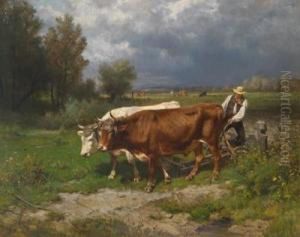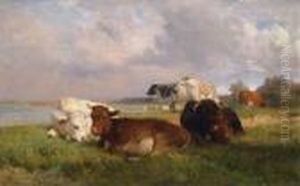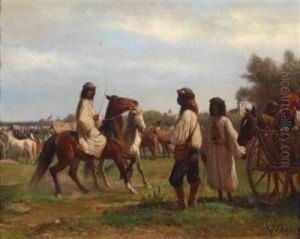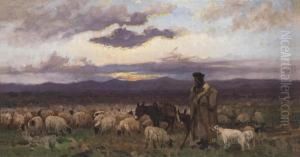Otto Karl Kasimir Von Thoren Paintings
Otto Karl Kasimir von Thoren was an Austrian painter born on April 27, 1828, in Vienna. He is primarily known for his genre paintings and landscapes that exhibit a Romantic sensibility, often featuring rural scenes, animals, and peasant life. Von Thoren was a part of the mid-19th century European art scene, which saw a resurgence of interest in national identity and the pastoral life, a sentiment reflected in his works.
Von Thoren initially studied at the Academy of Fine Arts Vienna, which was the premier institution for artistic training in Austria. His education there provided him with a solid foundation in the techniques and styles of academic painting. However, he later moved to Düsseldorf, which at the time was a hub for art and artists, and became associated with the Düsseldorf school of painting. This school was known for its meticulous detail, use of color, and emphasis on naturalism, all of which can be observed in von Thoren’s paintings.
Throughout his career, von Thoren traveled extensively across Europe. He spent time in Belgium and Holland, where he was influenced by the Dutch masters, whose attention to the effects of light and atmosphere can be observed in his work. His travels also took him to France, where he was undoubtedly exposed to the works of the Barbizon school, whose artists focused on rural and forested landscapes in a naturalistic manner.
Von Thoren achieved considerable success during his lifetime, with his work being sought after by collectors and art enthusiasts. He was also a member of several art societies, which was a testament to his reputation and the quality of his work. His paintings were exhibited in many prestigious galleries across Europe, and he received numerous awards for his contributions to the art world.
Otto Karl Kasimir von Thoren passed away on November 11, 1889. His legacy is preserved in the idyllic and serene images he created, which capture the essence of rural Europe in the 19th century. Today, his paintings can be found in various museums, galleries, and private collections, allowing his pastoral visions to continue to enchant viewers and art historians alike.
